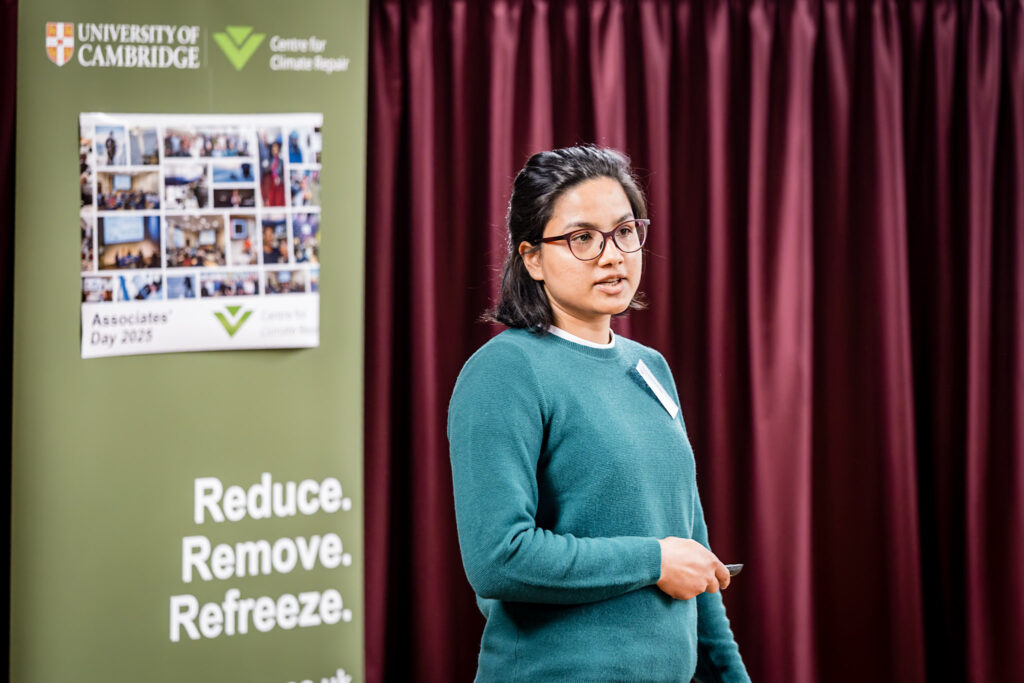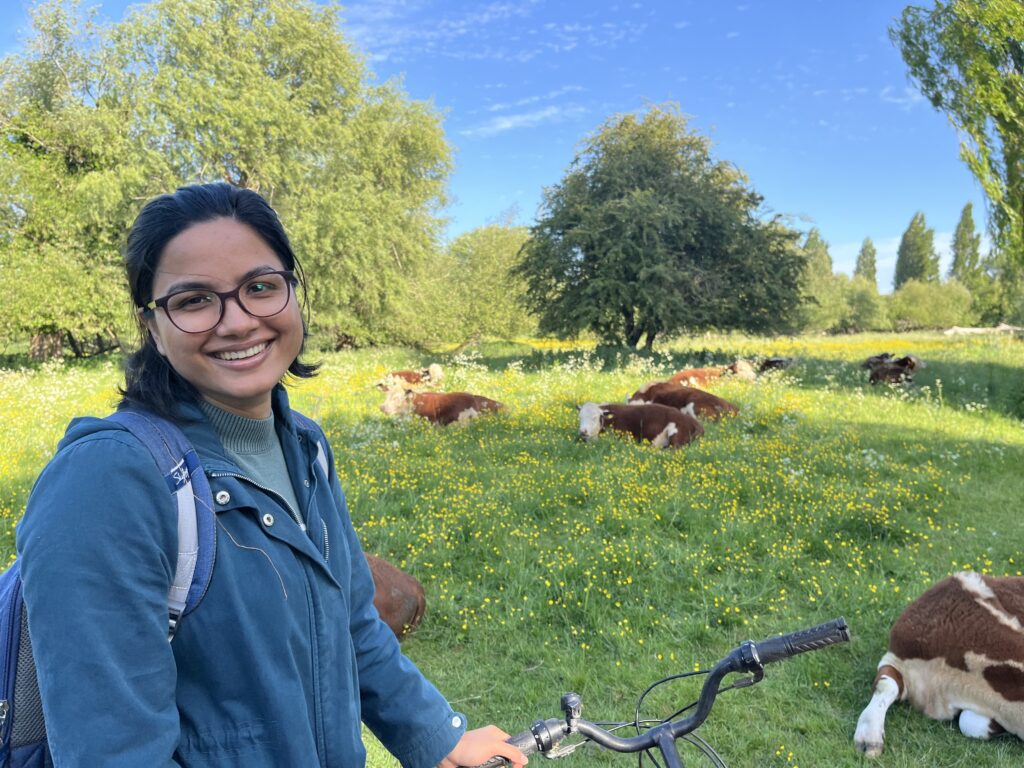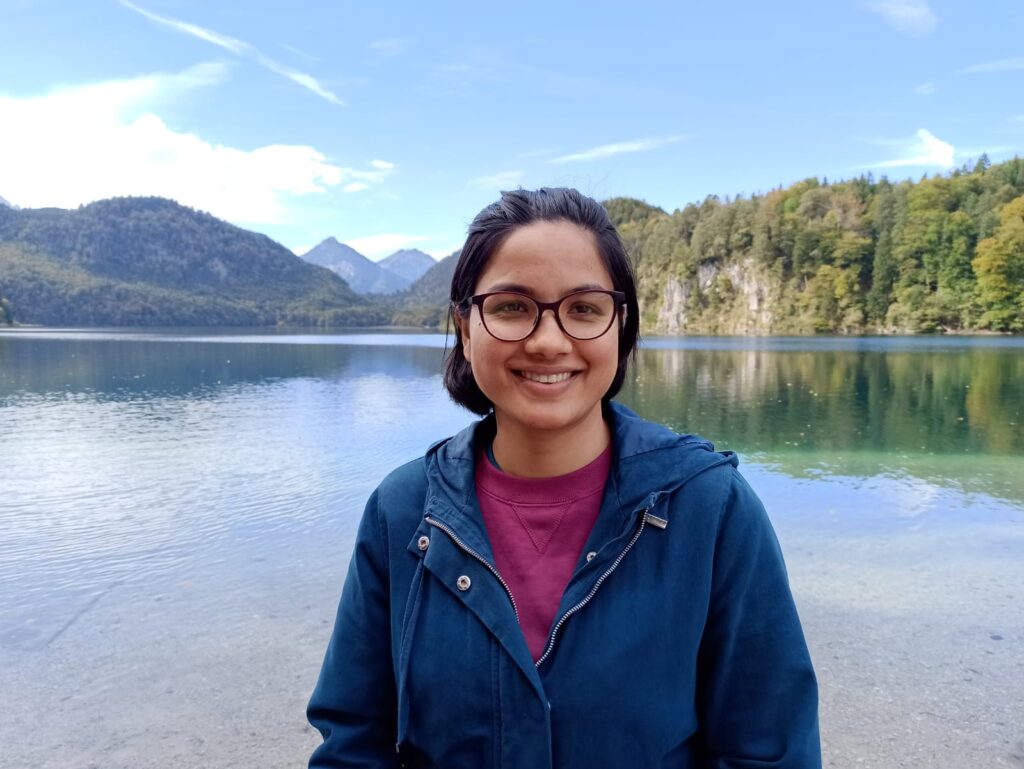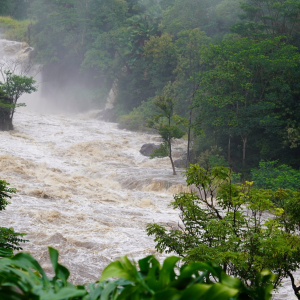October 15, 2025
Introducing our early-career researcher Dr Deepashree Dutta, based at Australian National University.
When Deepashree began her academic journey, climate science wasn’t on her radar. “I didn’t know as a child that I wanted to be a climate scientist,” she shares. Her early interests spanned science, mathematics, history, and literature, a tug of war that eventually led her to aeronautical engineering. But as she delved deeper, it wasn’t the aircraft structures that fascinated her most; it was the physics behind them, the fluid dynamics, thermodynamics, and the forces shaping our world.
That curiosity paved the way for a master’s degree in earth sciences and ultimately a PhD focused on climate change. Growing up in Northeast India, a region vulnerable to floods and extreme weather, gave her research a deeply personal dimension. “We’ve always had floods, but they’re getting worse. Summers are hotter, heatwaves more frequent,” she says. “I want my work to matter, not just in theory, but in people’s lives.”
Her academic path has taken her from Australia to one of the world’s most prestigious institutions: the University of Cambridge. “It was amazing to see centuries-old traditions alongside cutting-edge research,” Deepashree recalls. The experience broadened her collaborations, connecting her with researchers across Europe and beyond. “I worked with seven researchers from six institutes. Meeting collaborators face-to-face made a huge difference.”



But it wasn’t all smooth sailing. Accessing supercomputers for climate modelling and navigating Cambridge’s complex college system posed challenges. “Not everything was rosy,” she admits. Yet these hurdles taught resilience, and something unexpected: the art of communication. “I had to present my research findings to funders. At first, I didn’t enjoy it. It felt so different from showing scientific results. But it made me aware of my audience and the importance of telling a story.”
That awareness is growing into a passion. Deepashree understands storytelling’s role in science communication. “You can’t teach a child about climate change with graphs,” she says. “You need a narrative.”
Deepashree shares that she enjoys the communication opportunities, “but it’s a balance, and as a first-year postdoc at NESP, I need to focus on learning about my project. There’s not much time left.”
Deepashree is determined to use her expertise for good, both in Australia and back home in India. Her current work with the NESP Climate Systems Hub focuses on clusters of heavy precipitation in Australia, events that can trigger floods, degrade water quality, and damage infrastructure. “We’re seeing intense rainfall after long droughts. Understanding these patterns helps stakeholders plan better,” she explains. Her analysis spans regions like the Hunter River Basin and Hawkesbury-Nepean, with outputs designed for water agencies and infrastructure planners nationwide.
Looking ahead, Deepashree dreams of bridging her research with community engagement in Assam, her home state. “I’ve been thinking about how to give back,” she says. “It’s hard, there’s little funding and many political challenges, but I want to find a way.”
From modelling Arctic warming and volcanic impacts to tackling Australia’s flood risks, Deepashree’s work underscores the global nature of climate science, and the human stories behind it. Her journey is one of excellence, empathy, and ambition: a young researcher determined to make a difference.
And for the record? Pineapple on pizza: “I’d eat it, but I haven’t ordered it recently,” she grins, a small reminder that even climate scientists have lighter debates.
Find out more about our NESP Climate Systems Hub project that Deepashree is part of >

